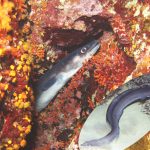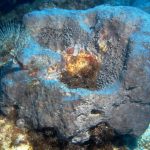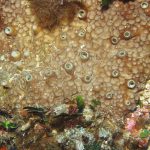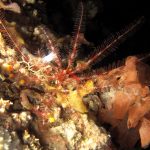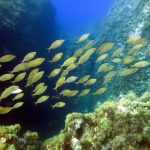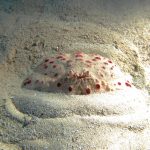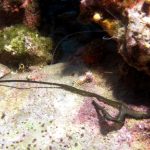Coris julis, the Mediterranean Rainbow Wrasse, is a small, colourful species of wrasse native to the northeastern Atlantic Ocean and the coastal waters of the Mediterranean Sea.
This species is present along most of the Mediterranean coastline, including around most of the main Mediterranean islands. In the eastern Mediterranean basin, however, this species is rare, being absent from Cyprus and Israel. It is however present in the Sea of Marmara and the far western part of the Black Sea (in Turkey and Bulgaria).
The genus Coris belongs to the family Labridae, suborder Labroidei, order Perciformes, class Actinopterygii, phylum Chordata and kingdom Animalia.
Wrasses (the family Labridae), are the most abundant and conspicuous fishes on tropical reefs around the world. They are second largest family of marine fishes and the third largest family in the Perciformes order, containing approximately 60 genera and roughly 500 species. Wrasses appear in a diverse range of colours, shapes, and sizes, often varying considerably within individual species.
Like many wrasses, Coris julis is a sequential hermaphrodite. All start in the smaller initial phase. These initial-phase individuals (both females and males) can turn into the larger secondary-phase males. At a length of about 18 cm, all individuals are secondary-phase males. The maximum length for the species is 25 cm. There is a marked difference in the appearance of the two phases. In the Mediterranean Sea, the secondary-phase male is green, blue, or brown, with white belly, a dark blue spot over the ventral fin, and a bright orange band on the side, while the smaller primary-phase females and males are brown with yellowish sides and white bellies.
Populations in the Atlantic differ in colour and genetics from the Mediterranean population, but, at present are maintained in a single species. There are at least 19 specific names which are considered junior synonyms of Coris julis. These are Labrus julis, Julis julis, Labrus paroticus, Labrus perdica, Labrus infuscus, Labrus subfuscus, Labrus keslik, Labrus cettii, Labrus giofredi, Julis mediterranea, Julis speciosa, Coris speciosa, Julis vulgaris, Julis melanura, Julis festiva, Coris festiva, Julis vulgaris, Coris taeniatus and Julis azorensis.
The Mediterranean Rainbow Wrasse generally occurs in littoral and inshore coastal waters around rocks and over seagrass beds. During the winter it can be found in deeper waters. It is typically found in aggregations but can also be found as solitary individuals, especially in rocky habitats. During the night, or when disturbed, it can bury itself in the sand. The eggs and larvae are planktonic.
Although Coris julis is usually found at depths of 0 to 60 metres, it can also occur as deep as 120 metres. It feeds on small gastropods, sea urchins, worms, shrimps, isopods and amphipods. Small individuals are known to clean other fishes.
It reaches sexual maturity at one year and is a protogynous hermaphrodite with pronounced sexual dimorphism. The females change to males before reaching 18 cm in length. All individuals above 18 cm in length are males. Sex change can take from several weeks up to 5.5 months.
It reproduces from May to August. Larger terminal phase males hold territories and spawn sequentially with haremic females, smaller terminal phase males can live in groups up to several tens of individuals. Initial phase males live and spawn in large groups, pelagic spawning and eggs.
The photo of this Mediterranean Rainbow Wrasse was taken at a depth of 10m at Reqqa Point, on Gozo’s north coast.
Photo taken by Brian Azzopardi


